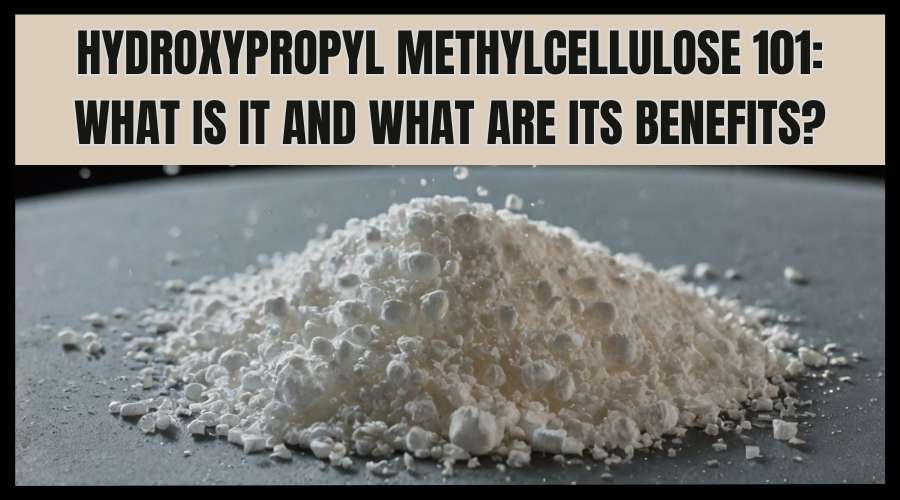
Hydroxypropyl methylcellulose, often abbreviated as HPMC, may sound daunting to many. However, its role and benefits are significant in various industries, from pharmaceuticals to construction. This article will delve deep into what hydroxypropyl methylcellulose is, its properties, and the myriad benefits it offers.
Hydroxypropyl methylcellulose is a chemically modified cellulose polymer. Cellulose, the primary constituent of plant cell walls, is Earth's most abundant organic polymer. HPMC is derived from this natural polymer through chemical processes introducing hydroxypropyl and methyl groups. This modification enhances the properties of cellulose, making HPMC a versatile and highly functional material.
The unique chemical structure of HPMC grants it several advantageous properties:
· Water Solubility: HPMC is highly soluble in water, making it an excellent thickening and binding agent.
· Thermal Gelation: It exhibits thermal gelation, which can form gels when heated and revert to a liquid state upon cooling.
· pH Stability: HPMC remains stable across a wide pH range, making it suitable for various applications.
· Biocompatibility: HPMC is biocompatible and safe for use in pharmaceutical and food products as a cellulose derivative.
One of the most notable uses of HPMC is in the pharmaceutical industry. Here are some key applications:
· Tablet Coating: HPMC is widely used as a film-coating agent for tablets. It improves the tablet's appearance, controls the release of active ingredients, and protects the tablet from environmental factors.
· Controlled Release Formulations: HPMC's ability to form hydrophilic matrices is an ideal choice for controlled-release drug formulations.
· Capsules: HPMC is used to manufacture vegetarian capsules, offering an alternative to gelatin capsules for those with dietary restrictions.
HPMC also plays a crucial role in the food industry:
· Emulsification: It acts as an emulsifier, helping stabilize oil and water mixtures.
· Texture Improvement: HPMC can improve the texture of various food products, providing a desirable mouthfeel.
· Fat Replacement: In low-fat and reduced-fat food products, HPMC can mimic the texture and mouthfeel of fats.
In the construction industry, HPMC is a valuable additive in several products:
· Cement and Mortar: It enhances the workability and water retention of cement and mortar mixtures, improving application and curing.
· Tile Adhesives: HPMC improves tile adhesives' adhesion and open time, making it easier to work with tiles.
· Gypsum Products: It is used in Gypsum-based products to improve their spreadability and reduce water absorption.
HPMC is also a common ingredient in personal care products:
· Shampoos and Conditioners: Shampoos and conditioners act as thickeners and stabilizers in hair care products.
· Lotions and Creams: HPMC provides a smooth texture and enhances the spreadability of lotions and creams.
· Toothpaste: It helps to stabilize and thicken toothpaste formulations, ensuring consistent texture and performance.
HPMC is environmentally friendly due to its biodegradability and renewable origins. As a cellulose derivative, it can be broken down by natural processes, reducing its environmental impact. Its use in various applications can help reduce reliance on non-renewable and non-biodegradable materials.
HPMC is generally recognized as safe (GRAS) by regulatory authorities such as the FDA. It is non-toxic and non-irritant and has a long history of safe use in food, pharmaceuticals, and personal care products. This wide acceptance underscores its safety and reliability in diverse applications.
Compared to other polymers, HPMC offers several distinct advantages:
· Versatility: HPMC's unique properties make it suitable for a wide range of applications, from pharmaceuticals to construction.
· Stability: It remains stable under various environmental conditions, ensuring consistent performance.
· Biocompatibility: Being derived from cellulose, HPMC is biocompatible and safe for medical and food products.
The ongoing research and development in the field of hydroxypropyl methylcellulose are paving the way for new and innovative applications. Scientists are exploring its potential in advanced drug delivery systems, biodegradable packaging materials, and more. The future of HPMC looks promising as it continues to evolve and find new applications.
In summary, hydroxypropyl methylcellulose is a versatile and highly functional polymer with many applications. Its unique properties make it an indispensable ingredient in the pharmaceutical, food, construction, and personal care industries. With ongoing research and development, HPMC holds even more promising possibilities. Whether in the healthcare sector, food industry, or construction business, understanding the benefits of HPMC can help you leverage its potential to the fullest.
By embracing this remarkable polymer, industries can achieve improved product performance, enhanced safety, and greater environmental sustainability. Hydroxypropyl methylcellulose is not just a chemical compound; it is a solution to many challenges faced in modern manufacturing and product development.